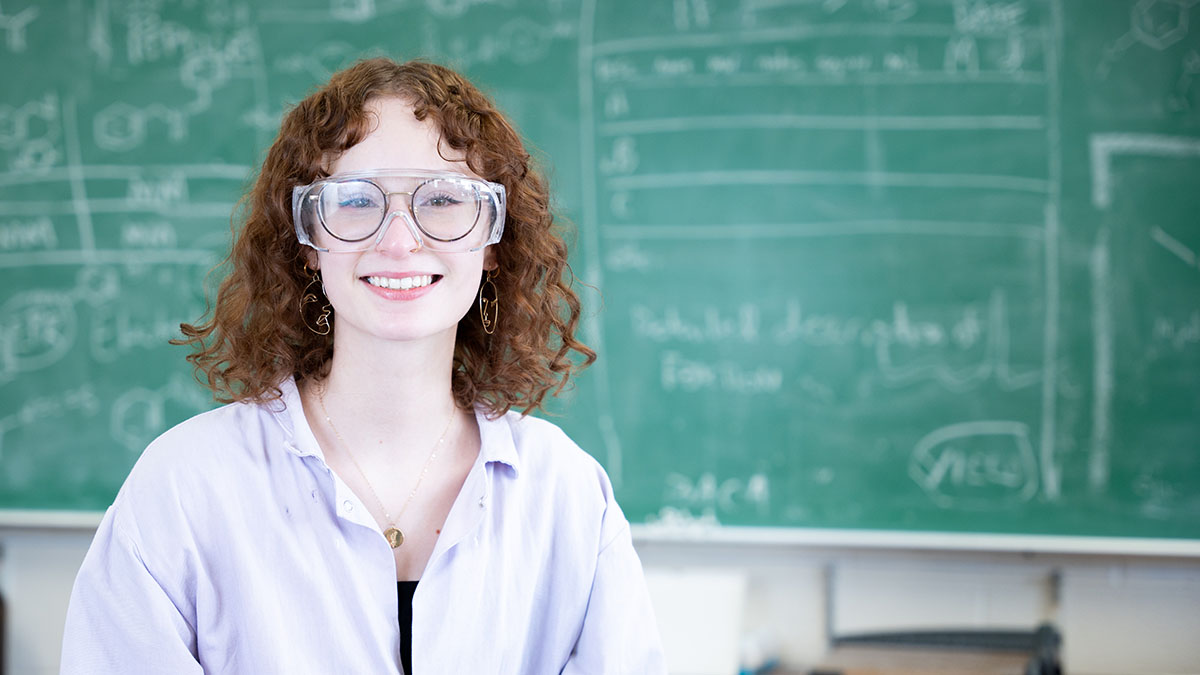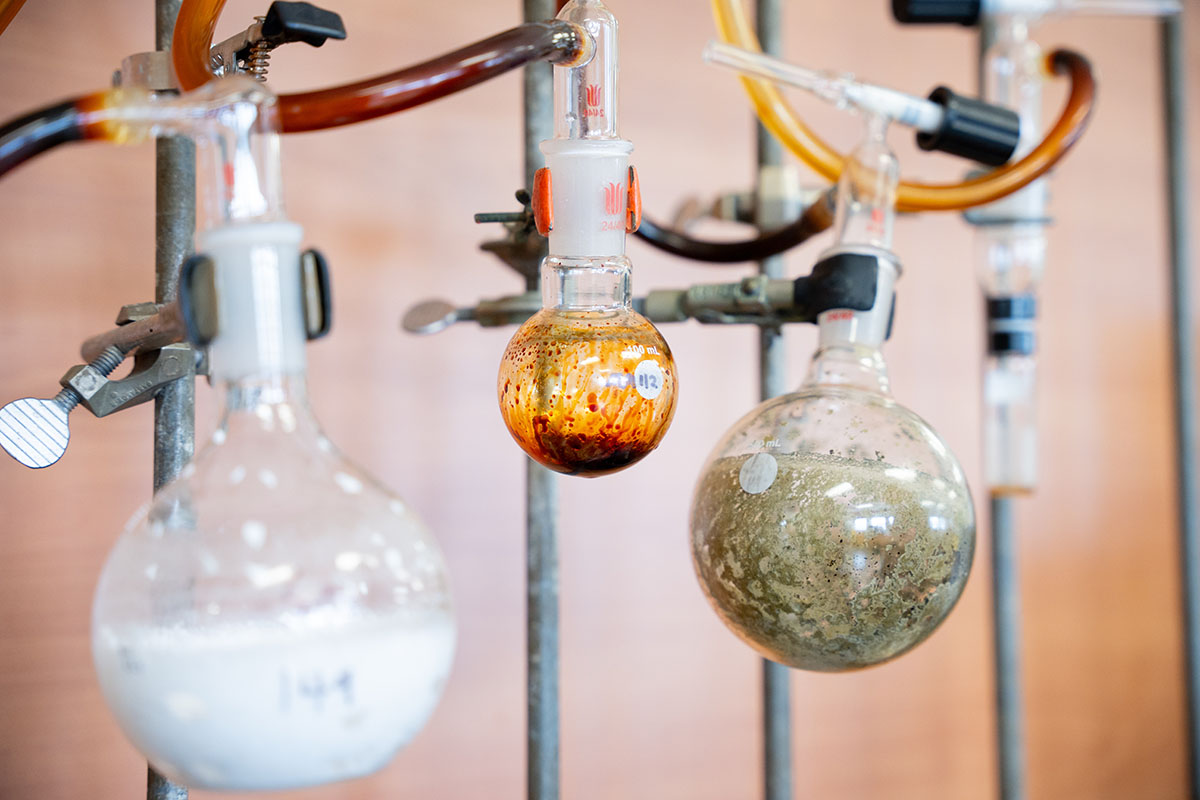Research Is Catalyst for Top Grad Schools
Idaho Falls Chemistry Major’s Research Lands Awards and Invites
Article by Ralph Bartholdt, University Communications
Photos by Garrett Britton, University Visual Productions
As a homeschooler in Idaho Falls, Maddie Moody’s first scientific experiment included purple cabbage extract and vinegar.
When the liquid concoction turned pink, she cheered.
Moody was 5 years old when her love of chemistry was inspired by one particular instructor — her engineer mother who doubled as a stay-at-home teacher to Moody and her siblings.
Moody, a U of I senior majoring in chemistry, recently earned an invitation to Princeton University to which she traveled to visit with professors, check out the university’s chemistry program and generally mix with future colleagues and peers.
“It was amazing,” Moody said, and made possible by a decision Moody struck while she was in high school.
“My sibling went to college in Moscow, and I knew U of I had a great chemistry program,” she said. “I would not have these offers to attend graduate school if it had not been for the research background I got at U of I.”

After a distinguished stint at Compass Academy where she completed college courses through dual credit and exhausted the school’s chemistry coursework, Moody settled in at the College of Science. She was hired by lab services, the department that oversees, cleans and maintains lab equipment and products, and a year later joined the lab of Professor Ray von Wandruszka.
One of the services of the Wandruszka Lab includes chemical analysis of archaeological artifacts.
“We identify and characterize historical materials and artifacts that are sent to us by archaeologists from all across North America,” Moody said.
Researchers use gas chromatography and spectrometers — electronic equipment that identifies the composition, including the trace elements, of samples. The samples come from research institutions, state and federal agencies and museums involved in assessing historical materials.
“We are usually asked to identify some unknown material in a bottle, or other container. It could be some sort of medicine used 100 years ago to cure a strange ailment,” she said.
Ray von Wandruszka
Department Chair & Professor
Renfrew Hall 116 & 331
208-885-4672
Not accepting graduate students
Research: Humic materials; Archaeological chemistry
View Ray von Wandruszka's profile

I have really enjoyed working on a project that has a direct, positive effect on the environment. Maddie Moody, senior chemistry major
The researchers concluded the bottle contained an old motor oil.
“What it was doing in the privy, we couldn’t tell, of course,” he said.
On campus, Moody splits her time between Wandruszka’s lab and the lab of Professor Kris Waynant where her research focuses on developing molecules used to recycle metals from electronic waste, such as discarded computer components, which makes up a large portion of office-generated landfill garbage.
“The idea is to create molecules that bind strongly to valuable metals present in old electronics and dissolve them into solution,” Moody said.
Once they are in a solution the metals can be removed from the liquid by coating them onto a surface – a process called electroplating.
“We can then use electroplating to get those metals back out so they can be reused,” she said. “It could be a great way to recover valuable elements which is important for sustainability, something that’s really important to me.”
After receiving her bachelor’s in chemistry in Spring ’24 she plans to attend graduate school and earn a doctorate in organic chemistry.
“I am really passionate about the environment and sustainability in general, so I have really enjoyed working on a project that has a direct, positive effect on the environment,” Moody said. “As I continue doing research in graduate school and throughout my career, I hope to keep sustainability a primary focus of the projects I take part in.”
Since joining the College of Science Moody’s academic resume has included a number of awards including the Hill Undergraduate Research Fellowship, the Donald Gustafson Scholarship and the William and Shirley Maeck Scholarship. She also received the Malcolm and Carol Renfrew Chemistry Scholarship and the Donald Roberts Scholarship, and is a College of Science Ambassador.
The accolades are great, Moody said, but it’s really two factors that determined her path.
“I’m very lucky to have my mom who has empowered me to do this,” she said. “I don’t think I would have applied and gotten accepted to graduate schools like Princeton if it had not been for the inspiration of my professors, and the research I have done here at U of I.”
Kristopher Waynant
Associate Professor
Renfrew Hall 216B
208-885-6768
Accepting graduate students
Research: Organic synthesis; C-linked glycosides; polymers; chemical education View Kristopher Waynant's profile
Published March 2024










